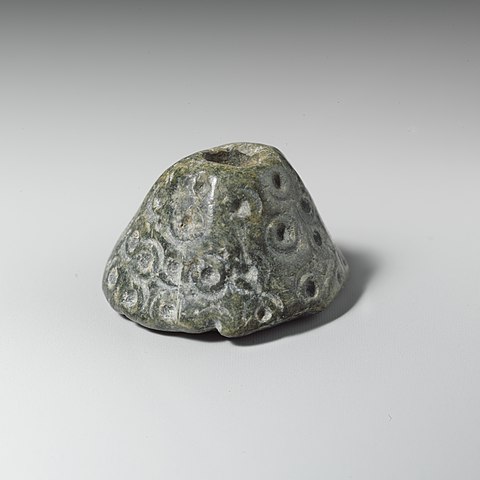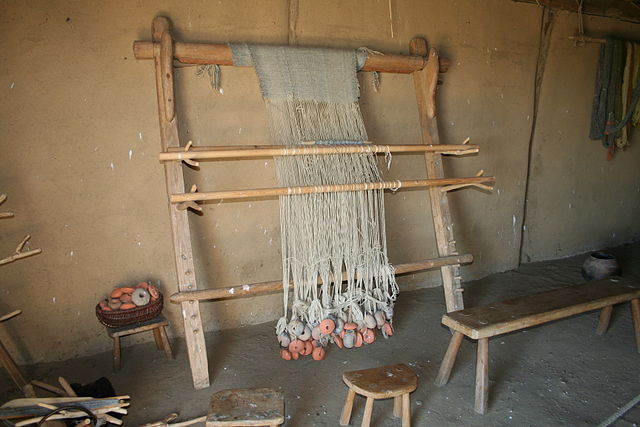Ariadne's Tribe: Minoan Spirituality for the Modern World
Walk the sacred labyrinth with Ariadne, the Minotaur, the Great Mothers, Dionysus, and the rest of the Minoan family of deities. Ariadne's Tribe is an independent spiritual tradition that brings the deities of the ancient Minoans alive in the modern world. We're a revivalist tradition, not a reconstructionist one. We rely heavily on shared gnosis and the practical realities of Paganism in the modern world. Ariadne's thread reaches across the millennia to connect us with the divine. Will you follow where it leads?
Find out all about Ariadne's Tribe at ariadnestribe.com. We're an inclusive, welcoming tradition, open to all who share our love for the Minoan deities and respect for our fellow human beings.
Ariadne's Tribe Pantheon: The goddess Arachne
This is one in a series of blog posts about our pantheon. Find the list of the whole series here.
You may have heard the Greek tale of Arachne, the mortal woman who angered Athena with her perfect weaving and ended up as a spider. What if I told you that Arachne was originally a goddess, and specifically a fate goddess? Like Ariadne, who was also "demoted" to mortal status in Greek myth, Arachne turns out to be a Minoan goddess.
In the Tribe pantheon, Arachne is the daughter of Therasia, our Sun goddess. Across Eurasia, Sun goddesses have long been associated with fate - our days are numbered by the rising and setting of the Sun, after all. The name Arachne comes from the pre-Greek (Pelasgian) word for spider; we don’t know what the Minoans called their fate goddess. It’s likely that “spider” was one of her epithets, since spiders spin threads and webs, longtime symbols of the winding and tangled paths of human lives.
We also call this goddess Ananke, a name that means 'necessity' and that can also be interpreted to mean the laws of nature. Though the Orphics, many centuries after the fall of Minoan civilization, considered Ananke to be a cosmic creator-goddess like our Ourania, for us she’s the goddess of fate.
We don’t know how the ancient Minoans understood the idea of fate, or whether they felt as powerless against the whims of the gods as the later Greeks apparently did. Our experience with Arachne in the modern world suggests that she’s not so much the designer of each person’s individual destiny as she is the one who tallies our decisions, for good or ill, and keeps track of where we’re going. In other words, she’s the Counter of Consequences, and it’s her thread, her web that we either climb to great heights or hang ourselves with.
So where can we find her in Minoan art and artifacts? Anywhere there are depictions of the fiber arts: spinning, weaving, sewing, and so on. (Dyeing cloth is a related activity whose patron goddess we call Potnia Chromaton, Lady of the Colors - she is closely tied to both Therasia and Arachne.)
The image at the top of this blog post is from an ivory seal. The round shapes are the weights used to put tension on the threads on a warp-weighted loom. The Minoans used distinctive disc-shaped loom weights. Here's what a warp-weighted loom looks like. This one is from a historic site in Germany, but this style of loom was used throughout Europe during the Bronze Age, including in Crete.
Image CC BY 3.0 via Wikimedia Commons
We don't have any actual looms from ancient Crete; the wood has long since disintegrated. But the loom weights survived. Another textile production artifact that survived the millennia is the spindle whorl. This Minoan example is carved from steatite (soapstone) and dates to 2400-1900 BCE:

Image CC BY 1.0 via Wikimedia Commons
A spindle whorl is the weight attached to a wooden dowel to turn it into a drop spindle. Until the invention of the spinning wheel in the 11th century of the current era, all thread and yarn was made using drop spindles. So when we talk about Arachne spinning the thread of a person's fate, this is how everyone pictured the process until the Middle Ages:
Image CC BY 1.0 via Wikimedia Commons
We can also find traces of Arachne's presence in the beautiful garments depicted in the Minoan frescoes. The patterns woven into the fabric may have had meaning beyond simple decoration, especially if the people wearing them were part of the priesthood or were undergoing some kind of ritual, like this young woman gathering saffron for what might have been coming-of-age rites in Akrotiri:

Image CC BY 1.0 via Wikimedia Commons
Though Arachne's presence may be more subtle than some of the other Minoan deities, she is woven throughout the art and the artifacts - through the daily lives of the people, in fact, just as she is woven through our lives. May the threads of our collective fates be smooth and untangled!
In the name of the bee,
And of the butterfly,
And of the breeze, amen.
Main blog image: line drawing by the author, hippo ivory seal showing loom weights and interwoven threads, Hagia Triada
Comments
-
Please login first in order for you to submit comments






















